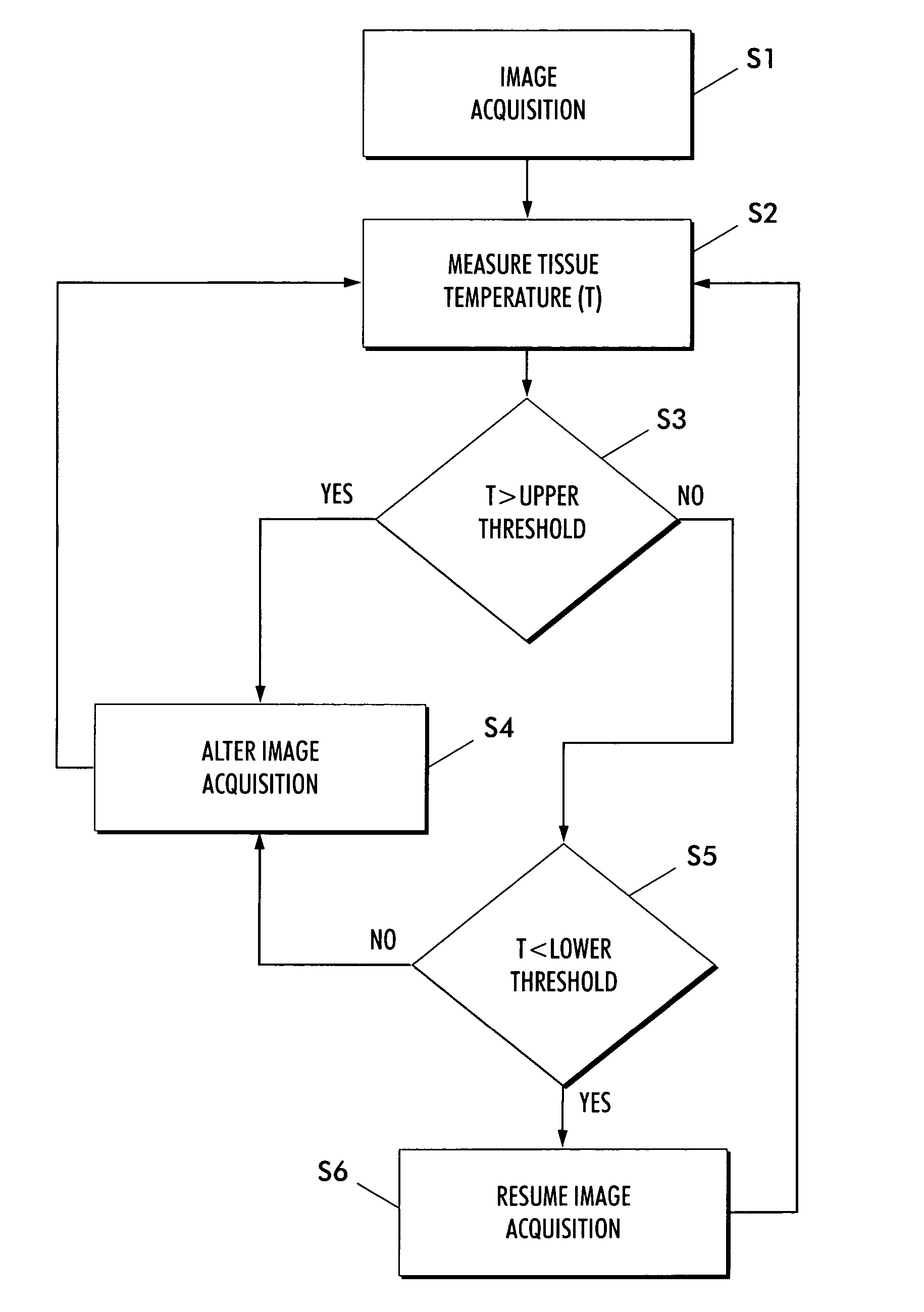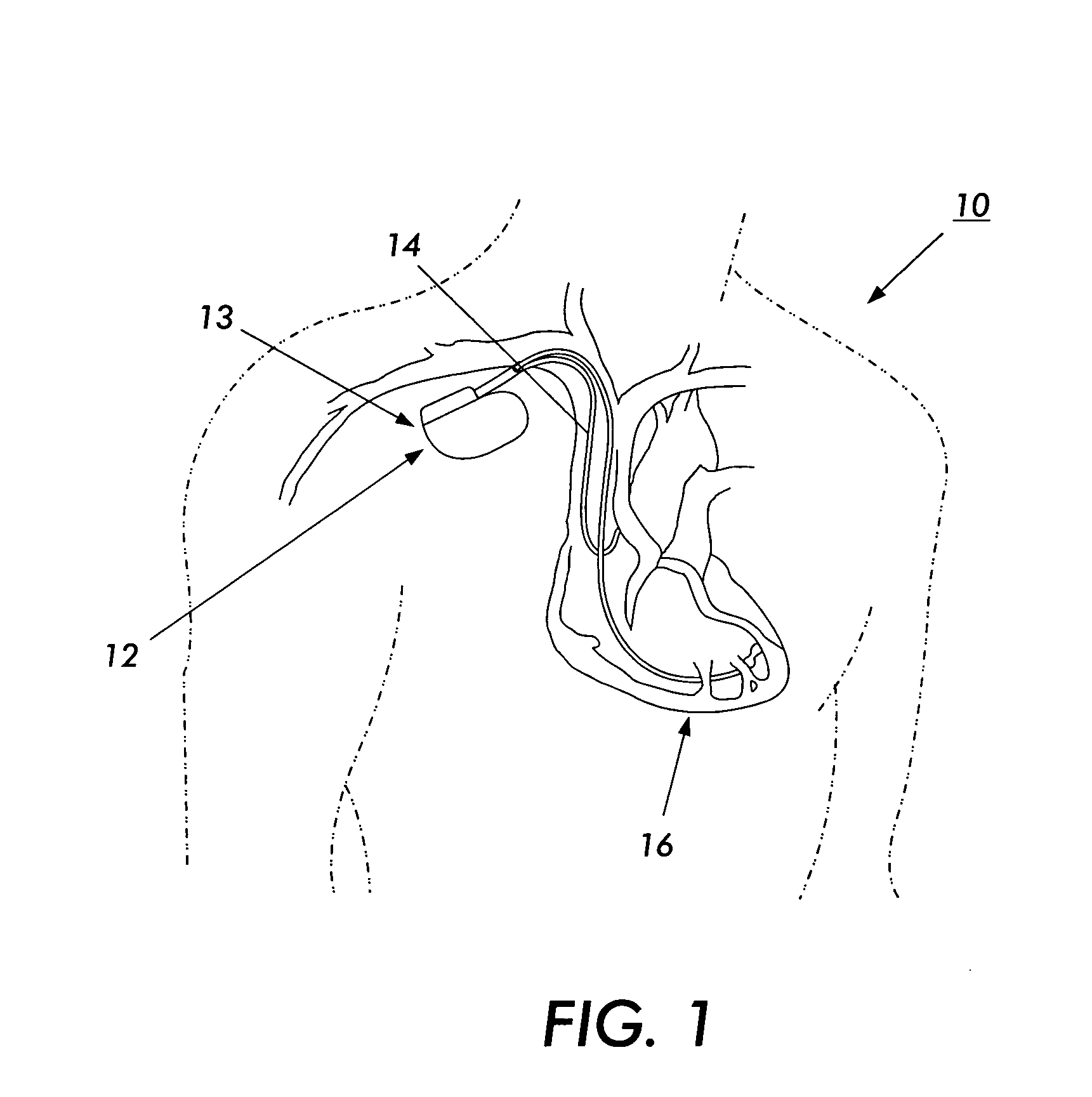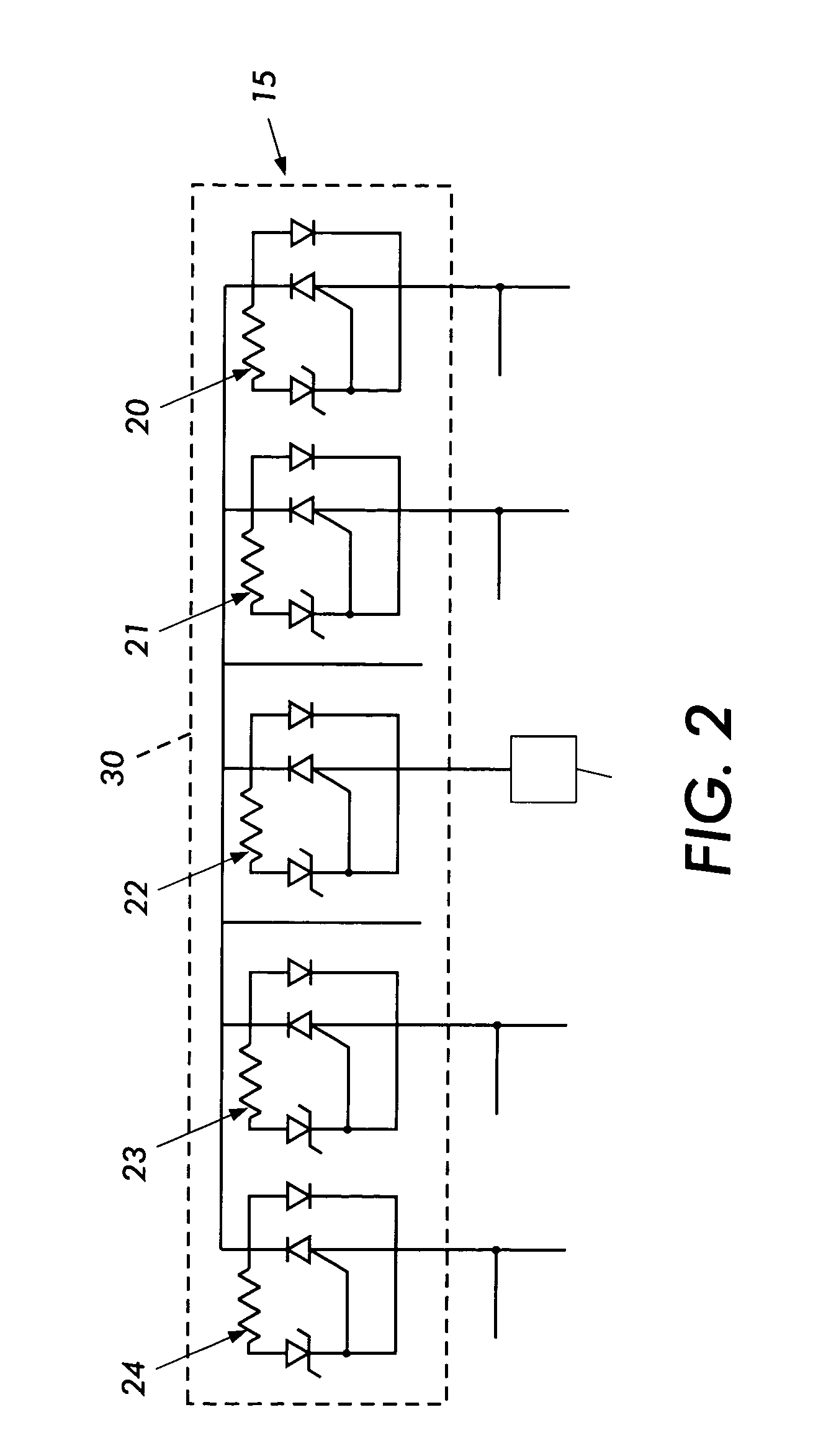Device and method for preventing magnetic resonance imaging induced damage
a magnetic resonance imaging and device technology, applied in the field of medical assist systems, can solve problems such as present problems, medical assist devices are vulnerable to external sources of severe electromagnetic noise, and impaired the desired functionality of pacemakers
- Summary
- Abstract
- Description
- Claims
- Application Information
AI Technical Summary
Benefits of technology
Problems solved by technology
Method used
Image
Examples
Embodiment Construction
[0072] As noted above, the present invention is directed to an implantable device, such as a medical assist device, that is immune or hardened to electromagnetic insult or interference.
[0073] For a general understanding of the present invention, reference is made to the drawings. In the drawings, like reference have been used throughout to designate identical elements. In describing the present invention, the following term(s) have been used in the description.
[0074] For the purposes of the description below and the appended claims, the term, medical assist device / system or tissue invasive device / system, refers to any device / system that may enable monitoring of living tissue(s) or living system(s) wherein the monitoring may be, but not limited to an EKG signal, an ECG signal, a glucose level, hormone level, cholesterol level, or magnetic resonance image. The medical assist device / system or tissue invasive device / system may also enable stimulus intervention to provide assistance to l...
PUM
 Login to View More
Login to View More Abstract
Description
Claims
Application Information
 Login to View More
Login to View More - R&D
- Intellectual Property
- Life Sciences
- Materials
- Tech Scout
- Unparalleled Data Quality
- Higher Quality Content
- 60% Fewer Hallucinations
Browse by: Latest US Patents, China's latest patents, Technical Efficacy Thesaurus, Application Domain, Technology Topic, Popular Technical Reports.
© 2025 PatSnap. All rights reserved.Legal|Privacy policy|Modern Slavery Act Transparency Statement|Sitemap|About US| Contact US: help@patsnap.com



